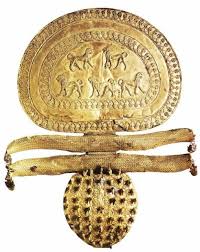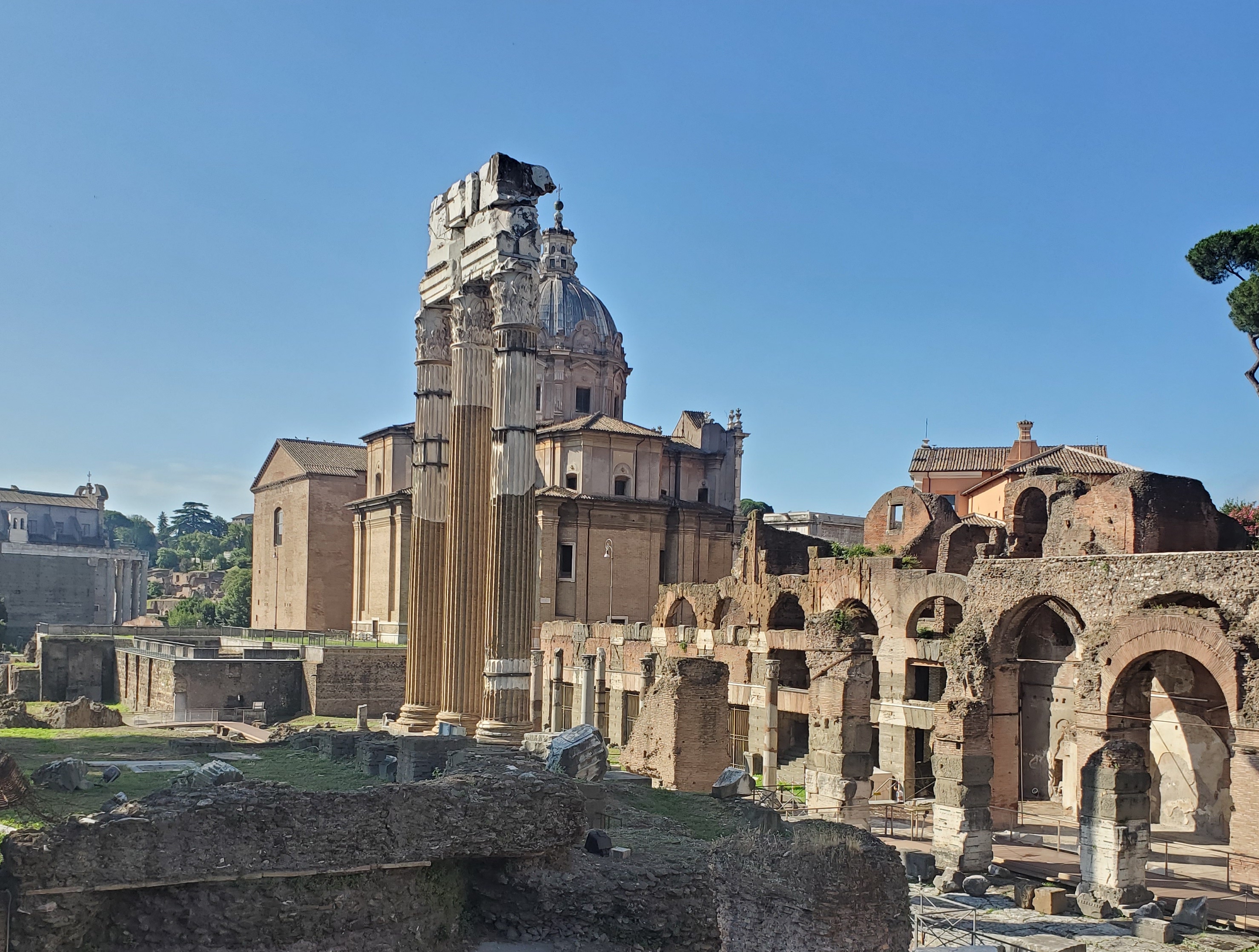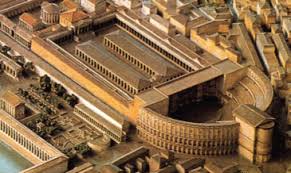Classics 51B Slide ID
1/150
There's no tags or description
Looks like no tags are added yet.
Name | Mastery | Learn | Test | Matching | Spaced |
|---|
No study sessions yet.
151 Terms
Fibula-Location
Regolini-Galassi tomb in ancient Caere/ modern Cerveteri
Fibula - date
675-650 BCE
Fibula - Material
Gold fibula with granulation
The Sarcophagus of the Spouses - Location
Ancient Caeren / modern Cerveteri
The Sarcophagus of the Spouses - Date
520 BCE
The Sarcophagus of the Spouses - Material
Terra-cotta
Tomb of the Leopards - Location
Tarquinia
Tomb of the Leopards - Date
520-480 BCE
Tomb of the Leopards - Material
Fresco painting
Tomb of Hunting and Fishing - Location
Tarquinia
Tomb of Hunting and Fishing - Date
520-510 BCE
Tomb of Hunting and Fishing - Material
Fresco painting
Portrait of Velia Seithi - Location
Tomb of Larth Velcha and Velia Siethi, Tarquinia
Portrait of Velia Seithi - Date
325 BCE
Portrait of Velia Seithi - Material
Fresco painting
The Orator, Aulus Metullus - Location
Florence
The Orator, Aulus Metullus - Date
1st century BCE
The Orator, Aulus Metullus - Material
Bronze sculpture
Temple of Jupiter Optimus Maximus - Location
Rome, Capitoline Hill
Temple of Jupiter Optimus Maximus - Date
Late 6th century BCE, Dedicated in 509 BCE
Temple of Jupiter Optimus Maximus - Material
Only stone foundations survive (ashlar masonry in tufa). N.B. superstructure in wood, plaster, paint, and terra-cotta
Archaic Temple by the Tiber - Location
Rome, Forum Boarium
Archaic Temple by the Tiber - Date
540-520 BCE
Archaic Temple by the Tiber - Material
Only stone foundations survive
Acroterion of Minerva and Hercules -Location
Rome
Acroterion of Minerva and Hercules - Date
510 BCE
Acroterion of Minerva and Hercules - Material
Terra-cotta
Site of Cosa - Location
Cosa - Roman Colony
Site of Cosa - Date
Founded in 273 BCE
Temple of Portunus - Location
Rome (Forum Boarium)
Temple of Portunus - Date
125-75 BCE
Temple of Portunus - Material
Tufa and Travertine
Temple of Hercules Victor - Location
Rome (Forum Boarium)
Temple of Hercules Victor - Date
Late 2nd - early 1st century BCE
Temple of Hercules Victor - Material
Marble Columns
Travertine and Tufa
(Veristic) Portrait of mid-1st century BCE male (head covered) - Location
Rome
(Veristic) Portrait of mid-1st century BCE male (head covered) - Date
Mid 1st century BCE
(Veristic) Portrait of mid-1st century BCE male (head covered) - Material
Marble
Portrait of the Tivoli General - Location
Tivoli
Portrait of the Tivoli General - Date
Early to mid 1st century BCE
Portrait of the Tivoli General - Material
Marble
Monument of Aemilius Paullus - Location
Delphi
Monument of Aemilius Paullus - Date
Dedicated 167 BCE
Monument of Aemilius Paullus - Material
Monument and marble reliefs
Frieze fragment with the riderless horse
“Altar” of Domitius Ahenobarbus - Location
Rome (Campus Martius)
“Altar” of Domitius Ahenobarbus - Date
Late 2nd century BCE
“Altar” of Domitius Ahenobarbus - Material
Marble
Census Scene - Parian marble
Mythological scenes of a marine procession - Marble from Asia Minor
House of the Faun - Location
Pompeii
House of the Faun - Date
Late 2nd century BCE
Fauces
Literally “throat,” the entrance passage into a Roman atrium house.
Atrium
Open central room in an early Roman town house (atrium house), located immediately after an entrance passage (fauces), and around which other rooms are arranged.
Tablinum
Primary reception room at back of the atrium, where imagines and family records were kept
Triclinium
Dining room
Theater mask - House of the Faun Location
Opus vermiculatum, made in situ (in place)
Opus sectile pavement - House of the Faun Location
In the tablinum
Alexander Mosaic - House of the Faun Location
Opus vermiculatum, made in situ (in place)
Ashlar masonry
Regular, cut, and quarried stone
Axial Orientation
A type of grid plan that shifted the intersection of major axes to one side
Capital
(architecture) Element crowning a column and supporting the architrave.
Cella (pl. cellae)
Cell
Dromos
Greek word for a passageway
Manubial temple
A monument funded ex manubiis, “from the spoils of battle,” technically to fulfill a vow to a particular deity made before the battle
Necropolis
Literally, city of the dead
Pediment
A gable, the triangular open end of a pitched roof
Peripteral
Surrounded on all sides by columns, usually of a temple
Pseudoperipteral
Describes a building entirely surrounded by columns, some of which are engaged rather than freestanding
Podium
A raised base or foundation for a structure, such as a temple or amphitheater
Porch
A covered walkway or entrance to a building that was supported by columns
Travertine
Locally available white limestone sometimes used like marble in Roman architecture.
Tholos
Round building
Tripartite Architecture
Three part architecture
Acroterion (pl. acroteria)
Decorative object placed atop a temple
Apotropaic
Wards off evil
Historical relief
Sculptures carved into walls or other flat surfaces to depict important events in Roman history
Terra-cotta
Ceramic
Verism
Portraiture that depicts individual facial features in direct, even exaggerated, detail. Derives from the Latin verus (“true”), which suggests a highly realistic style
Fibula
A pinGr
Granulation
Covering a surface with tiny granules of precious metals or goldI
Imago
likeness; Latin word for portrait
Paludamentum
Military cloak; worn by a general
Spolia
War booty
Suovetaurilia
Sacrifice of a bull, ram, and a pig, performed for purification rituals
Trophy
Captured arms of the enemy, arranged on a wooden post as a sign of victory
Iconography
Interpretation of visual symbols or images
Comparandum (pl. comparanda)
A thing to which another thing is compared
Portrait of Pompey - Location
Rome
Portrait of Pompey - Date
50 BCE
Portrait of Pompey - Material
Marble
Theater of Pompey - Location
Campus Martinus (Rome)
Theater of Pomey - Date
61-55 BCE
Theater of Pompey - Material
Concrete and brick core, marble facing
Forum of Caesar - Location
near the Forum Romanum (Rome)
Forum of Caesar - Date
Begun in 54, dedicated in 46 BCE. Finished by Octavian/Augustus in 29 BCE
Tumulus
tomb
Opus vermiculatum
worm-like work
Opus sectile
Cut work
Tessera, pl. tesserae
small, regular cut stones used in mosaics
Fibula from the Regolini-Galassi

Forum of Caesar

Theater of Pompey
